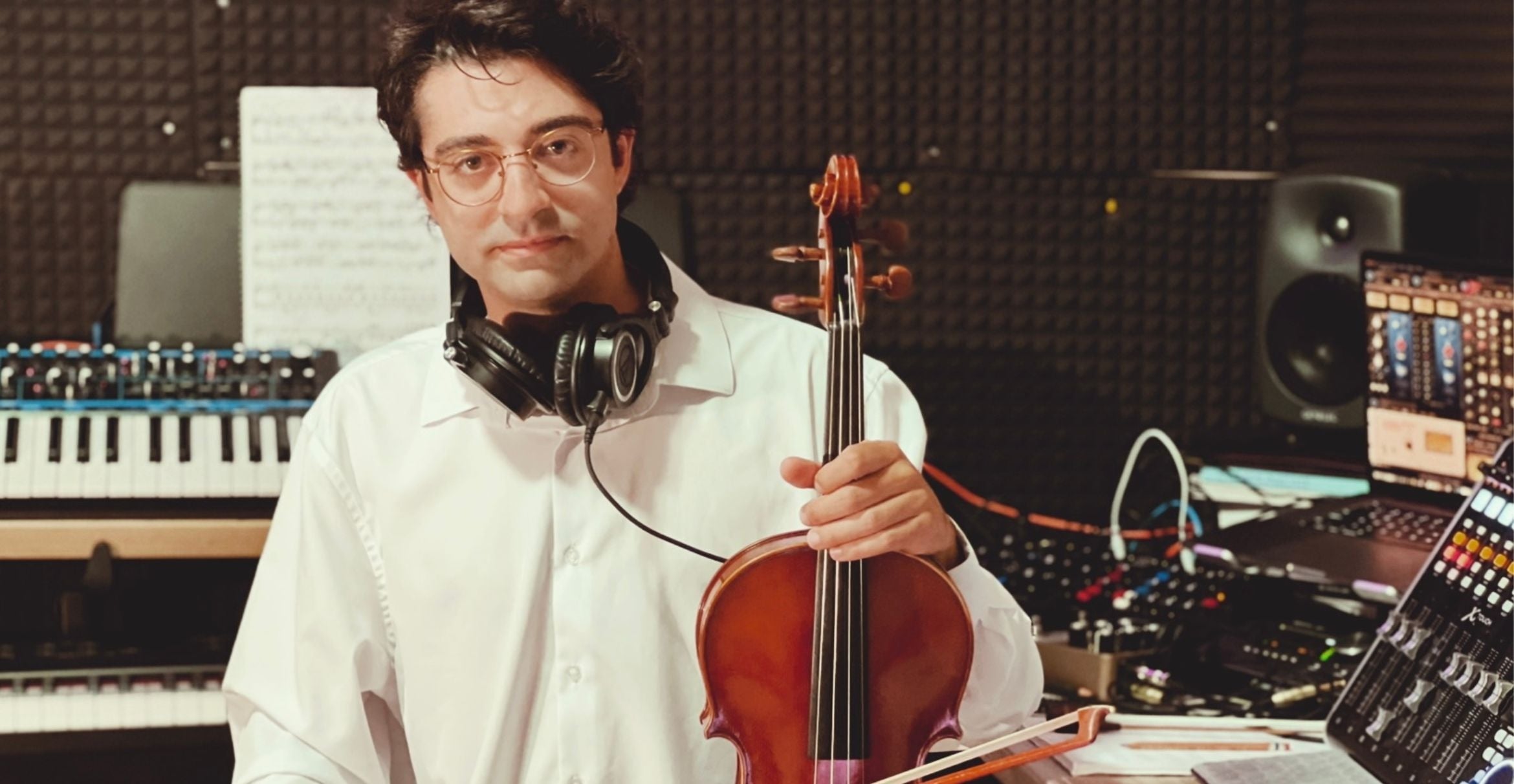Interactive Multimedia Exhibit at California Nanosystems Institute Features Student Artists from Around the World
Arts-engineering researchers from around the world will display their multimedia work in a peer-reviewed exhibition October 22-28 in the Media Arts and Technology facilities located in the California Nanosystems Institute at UC Santa Barbara. The exhibition, presented in conjunction with the Association for Computing Machinery (ACM) Multimedia Engineering Conference that takes place in Santa Barbara Oct. 23-27, is open to the public from 12 to 6 p.m. weekdays and 12 to 3 p.m. Saturday and Sunday.
Entitled "Networked Realities & Prospective Locative Hacks," the exhibition focuses on the role of multimedia and technology in exploring the human and social aspects of technology and science and how they re-define relationships and understanding between cultures and established disciplines. More than 90 pieces were submitted for consideration, from which the exhibition's curatorial committee selected 12. The committee chose work that addresses the interaction between humans and machines and the notion of cultural, linguistic, network, spatial or geospatial awareness.
Committee members included Alejandro Jaimes, advanced multimedia specialist for Fuji Xerox in Nakai, Japan; JoAnn Kuchera-Morin, UCSB professor of music composition and Chair of the Media Arts & Technology Program; George Legrady, UCSB professor of art and interactive media; Marko Peljhan, UCSB associate professor of art; and Lonce Wyse, an associate professor in the Communications and New Media Programme at the National University of Singapore.
Media Arts and Technology at UCSB is an interdisciplinary graduate program that fuses emergent media, computer science, engineering, and electronic music and digital art research, practice, production, and theory. Created by faculty members in both the College of Engineering and the College of Letters and Science, Media Arts and Technology gives students the opportunity to work at the frontiers of art, science, and technology. For more information about the program, visit www.mat.ucsb.edu.
Titles and brief descriptions of the individual pieces in the exhibit:
·"SmallTalk," by Marton Fernezelyi, Zoltan Szegedy-Maszak, and Robert Langh from the Hungarian Academy of Fine Arts in Budapest, questions whether or not machines can think.
· "Where Are You?" by Luc Courchesne, Guillaume Langlois, and Luc Martinez, from the Societe des Arts Technologiques in Montreal, immerses viewers in a three-dimensional world with a three-axis joystick at the center of the viewing platform that gives them the sensation of flying through space.
· "Autonomous Light Air Vessels," by Nikhil Mitter and Jed Berk of the Art Center College of Design in Pasadena, features a set of specially designed floating objects that exist in a networked environment and communicate through assigned behaviors.
· "Imago," by Eunsu Kang, from the University of Washington, is an interactive system in which an alien has a unique communication method of movie projection. Imago projects its messages in the form of movies on the viewer's body in response to that person's position and speed.
· "Defendex," by MarkDavid Hosale and John Thompson, from UCSB, simulates the sensation of 1950s technology. Nostalgic references suggest comparisons between the fearful culture of the Cold War and the culture of fear associated with the current War on Terror.
· "Tabletop Community: Visualization of Real World Oriented Social Network," by Noriyuki Fujimura; Satoshi Fujiyoshi; Tom Hope; and Takuichi Nishimura, from the National Institute of Advanced Industrial Science and Technology in Tokyo, is an interactive piece in which a table representing community acts as an interface between human and computer.
· "Tre Marie," by Annie Wan; Hiroki Nishino; and Pamela Pietro, from the University of Washington, is an interactive audio-visual dance performance that uses radio-frequency identification (RF-ID) technology to encode the spatial aesthetics of the interaction between humans, theatrical space and cinematic space.
· "GORI.Node Garden," by Jee H Oh; Allan Au; and Erik Kearney, from the Ravensbourne College of Design and Communication in London, presents physical and ambient data as a network garden in which plants are nourished by communication data. GORI means "an open hook" in Korean and is often used to represent human relationships.
· "Books of Sand," by Mariano Sardon, from the Universidad de Tres de Febrero in Buenos Aires, are interactive installations that relate the movement of hands in the sand to hypertexts containing texts by Argentinian writer Jorge Luis Borges downloaded from the Internet.
· "SLIDERS," by Jean-Marie Dallet, from Ecole Europeenne Superieure de l'Image, blends film/video, sound, hardware, software, and concepts in real time to create what the artists call "the movie to come."
· "Takashi's Seasons," by Takashi Kawashima, from UCLA, is a sequential live shadow puppet/video performance in which an artist performs several interpretations of the four seasons. As the puppets cast shadows on the screen, the artist uses a custom input device to manage the content they project as well as to trigger sound effects.
· "Drafting Poems: Inverted Potentialities," by Eitan Mendelowitz, from UCLA, challenges preconceived notions of intelligence, creativity, and authorship and builds on the tradition of algorithmic poetry. As viewers sketch on the glass surface of a drafting table, the computer system gathers statistics on how they do so. In turn, these statistics inform a probabilistic text generation system that creates original poetry.
Related Links
Media Arts Technology
California Nanosystems Institute
Digital Images from George Legrady



